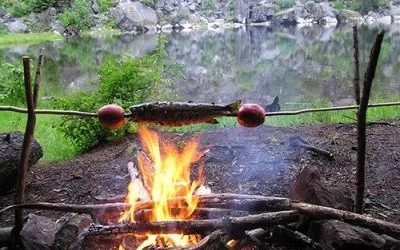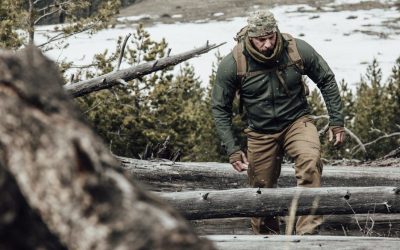What if you get lost in the wilderness without sufficient clothing? What do you do? Make your own survival clothing.
A shelter is crucial to your survival if you are stuck or stranded in the wilderness. Sometimes, you don’t have the necessary tools and supplies, to build an adequate shelter, available to you. Look around, nature has probably given you something to work with if you stop for a moment to assess the situation.
Don’t allow your mind to make the situation more difficult. Take a moment to stop and really look at your options. You will probably be pleasantly surprised at the numerous shelter options available to you. Because the rain, sun, and extreme temperatures are hard on the body, you will need to find shelter quickly. Your current environment offers shelter to numerous species of animals. You, too, can also take shelter from the natural landscape. A simple log, for instance, can be useful for protection. If the log is at the right angle to the wind, it becomes a handy windbreak for you to use for protection.
Another fantastic idea is to use another log or stick to dig out a hollow area in the ground, where you can sit or lie down, to further protect yourself from the elements. Hollow trees and logs are another option for shelter in a serious survival situation. Whether the tree is standing or has fallen down, it can provide some shelter. Broken boughs or sweeping branches can offer protection from the hot sun, pouring rain, or howling wind. Overhangs and caves can provide a ready made area to rest and relax. Use some rocks or debris and sticks to form a door to the shelter area for even greater protection from the elements.
Caves can be home to animals such as insects, snakes, or other dangerous creatures, so be cautious when exploring these areas as a potential natural shelter. Even in snowy weather, you can take shelter beneath a medium-sized tree. Pockets may form beneath the branches near the trunk. Dig in the snow to locate such areas to use for shelter. Stay inside an open pocket of snow. Cover yourself up with snow to use as insulation. Your body heat will remain in this area, rather than escaping, and help to keep you warm. This will reduce the risk of frostbite and hypothermia. If you are in an area that is completely open, sit with your back to the wind.
Pile any supplies or belongings behind you to act as a windbreak for protection. You should always select your shelter area wisely. Your shelter must be safe for survival. Try to avoid dangerous areas with falling rocks or falling trees. Proper drainage and ventilation are also key to survival. Areas that are too close to water may be dangerous due to flooding. You can use logs, hollows, or caves to protect yourself from the wind, sun, and weather. Even your supplies or broken limbs can offer some comfort. Finding a safe shelter to sleep and rest is crucial to your survival in an emergency. You can use the assets of the environment to protect yourself until help arrives.






